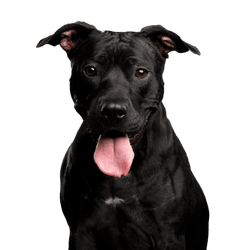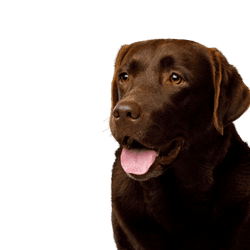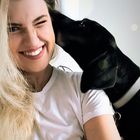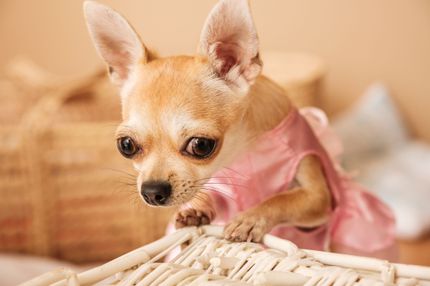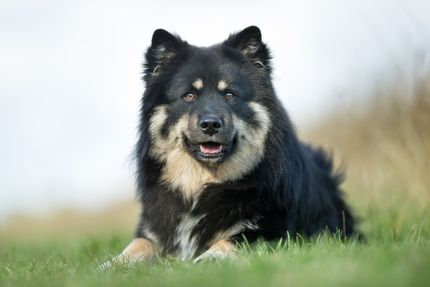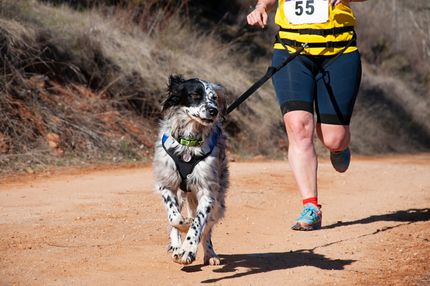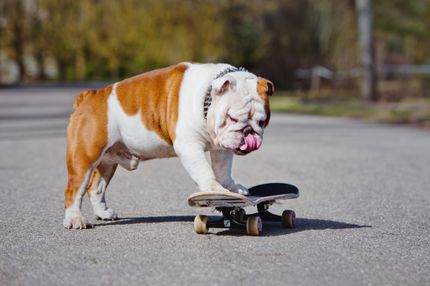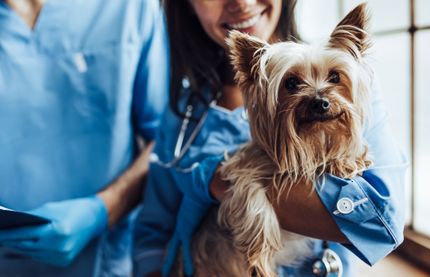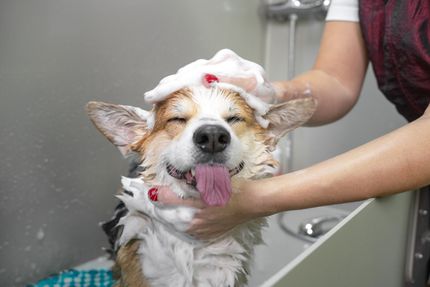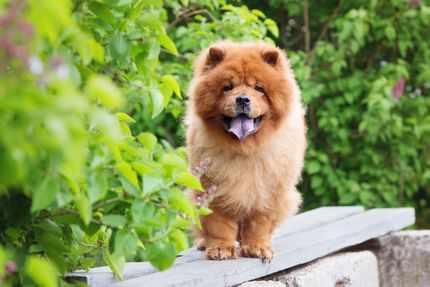Facts & Origin
The Labrabull - a Labrador Retriever - American Pit Bull Terrier mix
The Labrabull is a comparatively young designer mixed breed that is the result of a cross between a Labrador Retriever and an American Pit Bull Terrier. The aim of this mix was to combine the friendly, hard-working nature of the Labrador with the strength, loyalty and alertness of the Pit Bull.
Criticism of designer dogs
Although this combination can unite many positive characteristics, the Labrabull is not without controversy. Critics complain above all that the deliberate mixing of two very different breed characters can also lead to behavioral insecurities or unpredictable traits.
Who is this crossbreed suitable for? What to look out for?
In addition, the Pit Bull is on breed lists in many countries, which can also have consequences for the Labrabull in terms of keeping it on a lead or compulsory insurance. Nevertheless, the Labrabull is becoming increasingly popular with sporty, experienced dog owners - especially if it is handled lovingly, clearly structured and with sufficient exercise. In the right environment, it can be a close-knit, lively and reliable family dog.
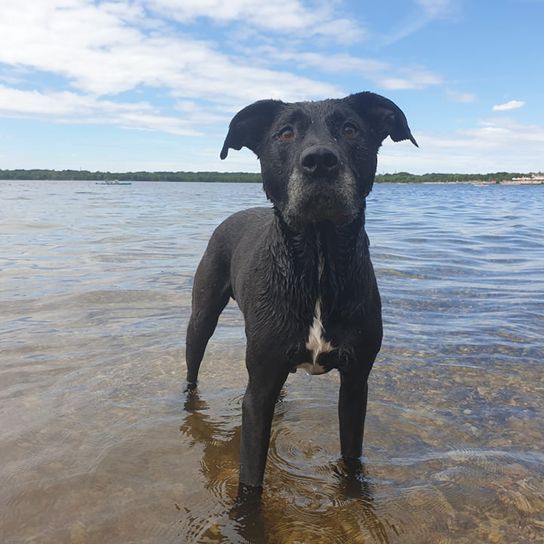

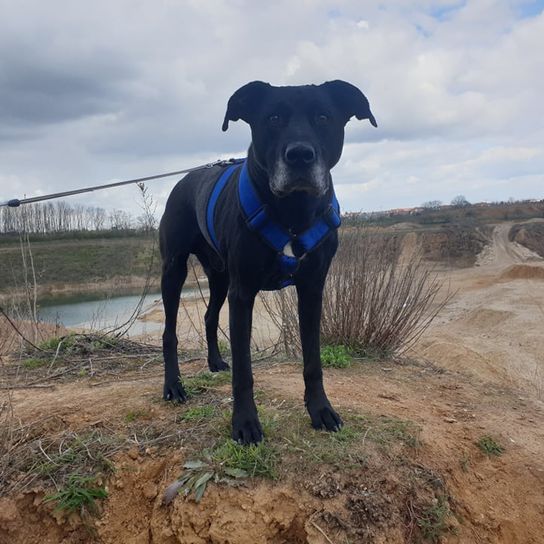
| Alternate Name | Lab-Pitt, Bullador |
| Origin | USA - UK |
| Life expectancy | 10 - 14 years |
| Care requirements | low-maintenance |
| Activity level | average to high - average |
| FCI group | not recognised |
| AKC group | not recognised |
| KC group | not recognised |
More American Pit Bull Terrier mixes
More Labrador Retriever mixes
Attitude, character and temperament of the breed
Possible character traits of the Labrabull
The Labrabull usually combines the friendly, people-oriented nature of the Labrador with the strength, determination and protective instinct of the Pit Bull. In many cases, this mix proves to be loyal, intelligent and playful, although a certain amount of stubbornness or independence can be typical - especially if the Pit Bull's influence predominates. Labrabulls need clear, loving leadership, as they are very sensitive to the mood of their caregiver and do not respond well to harshness. Properly socialized, they are often fond of children, cuddly and affectionate, but are usually also alert and watchful, which in some cases makes them good watchdogs.
The Labrabull in everyday life
In everyday life, the Labrabull is a dog with a lot of energy and an urge to move. It needs both physical exercise - such as long walks, jogging or dog sports - and mental activity, such as search games or obedience training. Without this exercise, he can become unbalanced or destructive. He loves to be part of the family and should not be kept alone or isolated. Even if he can adapt well with appropriate training, he is not a beginner's dog, as he needs clear boundaries and can sometimes be challenging in his behavior.
Character
What diseases can occur?
Like many mixed breeds, Labrabulls have the potential to be more robust than purebred dogs - but they can still have hereditary health problems from both parents. These include hip dysplasia (HD), elbow dysplasia (ED), allergies, heart disease or even cancer, which is more common in older Labradors. Eye diseases or skin problems can also occur. Responsible breeding, regular veterinary checks and a balanced diet can help to minimize many of these risks. .

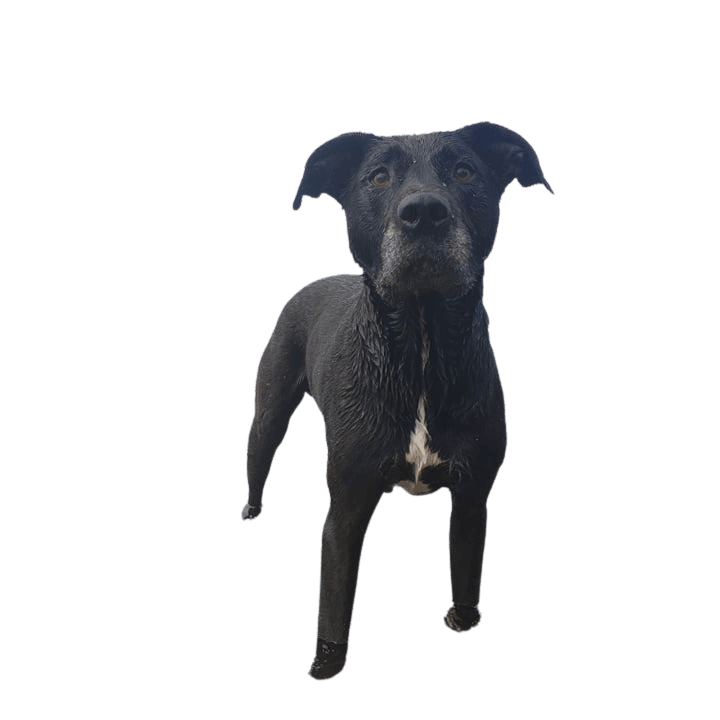
What does this Labrabull look like?
The appearance of a Labrabull can vary greatly, as both parent breeds have different external characteristics. They are usually medium to large in size, muscular in build and appear strong but agile. The coat is short to medium-long, smooth and easy to groom, often in colors such as black, brown, beige or grey, sometimes with white markings. The head can be rather broad, the ears are usually semi-erect or drooping, the eyes are expressive and the tail is often strong and straight. Overall, the Labrabull radiates a mixture of friendliness, strength and sporting elegance.
Known Diseases
Hip dysplasia (HD)
Hip dysplasia (HD) is a genetic condition in dogs where the hip joint is not shaped properly. This leads to pain, stiffness and restricted movement.
Elbow dysplasia (ED)
Elbow joint dysplasia is a chronic disease complex of the elbow joint of fast growing dog breeds.
Eye diseases
Often occur with allergies and intolerances.
Overweight
Often, unfortunately, the dogs very much under excess weight. But the dogs themselves are never to blame!
Joint damage
In some breeds, joint damage can occur later in life, affecting the musculoskeletal system.
FAQ
-
An adult Labrador Retriever and American Pit Bull Terrier mix can weigh between 25 and 50 kg and is around 50 to 70 cm tall.
-
The average life expectancy of a Labrador Retriever/American Pit Bull Terrier mix is 12 to 14 years.
-
This mixed breed needs at least 60 minutes of exercise per day, just like any dog breed. An active family who enjoys walking, jogging, swimming or fetching would be a good choice for this puppy.
-
The short, dense coat of a Labrador Retriever/American Pit Bull Terrier mix is easy to care for. Weekly brushing helps to remove dead hair and maintain the coat's healthy shine.
-
Common health problems in this hybrid breed include hip and elbow dysplasia and allergies.

